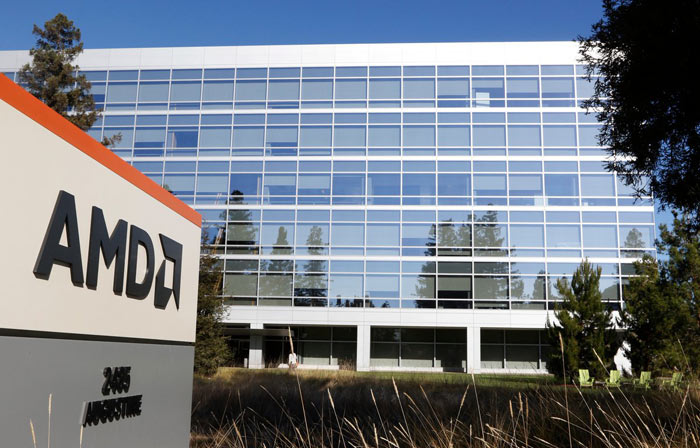Low-vibration & low-noise design & retrofit
We have a long history with AMD facilities in Texas and California. Our experience includes vibration design of sensitive manufacturing spaces; noise design of manufacturing and other spaces; and vibration retrofit of
an existing office floor for occupant comfort.
AMD Fab 25, Austin
Located on the outskirts of Austin, Fab 25 originally produced chips for AMD’s logic business. A recent product conversion saw the implementation of floating gate technology at the 110nm node, and the fab is now fully dedicated to flash memory production. We worked with the design team to develop a precast structural system for the process floor.
Our scope on Fab 25 included full vibration and noise design of the facility. The structure incorporated the use of a precast waffle floor system for the sensitive process floor. The unique use of large fan towers for the air
recirculation system in this fab presented a number of noise control challenges.
After construction, our services continued during tool hook-up and installation. We performed analyses of the vibration characteristics and isolator efficiencies of numerous dry pumps. While these subfab hookup equipment are far smaller than the base-building rotating systems, they are far more numerous. Finally, our vibration consulting efforts ended with the sensitive tools themselves, for which we designed tool pedestals.
AMD SDC, Sunnyvale
The Submicron Development Center was constructed in the early 1990s; the design employed two different types of grillage and waffle floors for the photo and non-photo areas. After construction, we were called in to resolve a major vibration issue on the fan deck. Rather than a truss system to support the long spans of the fan deck, the design team chose to use deep beams imported especially for this facility. The very-low resonance
frequency of the deep beams was strongly excited by the low-speed fans they supported. Our effort involved quantifying the effect of the interaction and resolving the question of whether structural damage could occur.









